Standing at Poipu last night for sunset (pictured here), we were reminded of the tragedy on Thursday. That’s when a 66-year-old visitor died while bodyboarding. Another California bodyboarder, age 77, died under similar circumstances late in June at Poipu. Also, a Utah visitor, age 62, died while snorkeling at Poipu on April 14. That’s three deaths in just 4 months.
Why do chronic visitor drownings plague Poipu Beach?
Poipu Beach can be both calm and wild, sometimes at the very same time. The small and centrally-situated, reef-protected area is generally the safest. But by the time you go out by the Waiohai, or to the other end of the park at Brennecke’s Beach, it can often be a totally different situation.
We also don’t know the level of swimming ability, physical condition, or ocean experience of the three recent victims. They had age in common. We aren’t aware of their travels and how long they may have been on Kauai since flying, which may or not be an issue. Read: Don’t Snorkel In Hawaii After Flying. But here are some things to think about before going into the ocean that can help keep you safe.
- As the seasons change in Hawaii, so do surf conditions. For example, Poipu is relatively calm during the winter but not so in the summer. So a beach with perfect swim conditions during one season may be turbulent in another.
- Check the Safe Beach Day website, sponsored by the Hawaiian Lifeguard Association, before going out. Their Kauai map today (August 5) shows hazardous conditions on most beaches except for the North Shore. Keep this in mind if you plan to swim away from the shore, snorkel, or surf.
- Ask a lifeguard for recommendations on how to enjoy a beach safely. They can tell you how far out to go and where dangerous conditions are.
- Have a realistic idea of your ocean experience, conditioning, and swimming ability. Remember that the ocean is stronger than you are, and there are currents and riptides you may not see from shore.
- Pariticipate in ocean activities with a buddy, not alone.
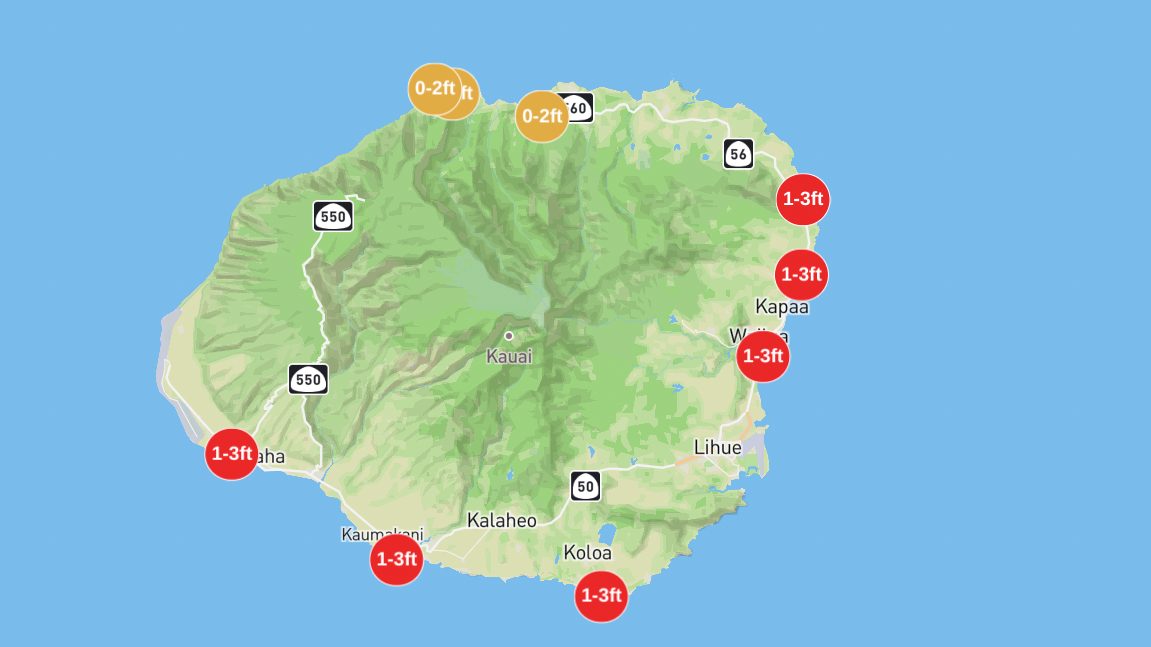

Drownings are the third leading cause of death for Hawaii visitors.
The drowning rate for visitors is more than eight times higher than for those who live here. Kauai has the highest rate of fatal ocean drownings. We can’t say how many times we have seen rescues at Poipu over the years, and a Kauai emergency room doctor friend commented to us about that very fact.
“The rate of fatal ocean drowning for non-residents in Hawaii is about eight times higher than for residents. Kauai has the highest ten-year rate (/100,000) of total (resident and non-resident) fatal ocean drownings (82.5), followed by Maui (64.6), Big Island (51.8) and Oahu (27.2).”
State of Hawaii, Department of Health
Of Kauai’s 70 beaches, fewer than one dozen beaches are lifeguard protected. Poipu Beach is one of those with life guards. More than 300 people have drowned on Kauai since 1970. In that period, the victims had an average age of 46, and 9 times more men than women died. Three-fourths of all drownings were visitors.
We remember these last three visitors who drowned.
Ramon Manalo, from California, died in August. He was found lifeless in the water just off the Marriott Waiohai Beach Club, pictured here last night at sunset. Others on the beach called for help, and lifeguards at the nearby tower came on scene to help. They were assisted by fire personnel, who helped arrange for ambulance transport to Hawaii Pacific Health’s Wilcox Hospital. He was pronounced dead at the hospital.
AMR personnel continued medical treatment while transporting Manalo to Wilcox Medical Center, but they were unable to revive Manalo. He was later pronounced dead by a doctor at Wilcox Medical Center. An autopsy report is pending.
Judith Bailey, from California, died in June. She was snorkeling at Poipu Beach Park. Bailey was spotted by lifeguards, who provided help prior to the fire department and ambulance first responders arriving. She, too, was pronounced dead in the same hospital on Kauai.
Leonard Boteilho of Riverton, Utah, died in April. He was found by bystanders face down in the water shortly after 10 am. while snorkeling. Boteilho was brought to shore by fellow swimmers who began CPR prior to the lifeguards’ arrival.
May their memories be a blessing and their deaths a reminder to exercise care in the ocean.
Get Breaking Hawaii Travel News


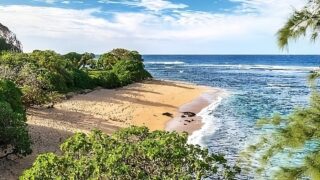
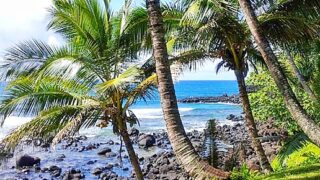

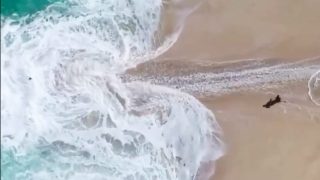
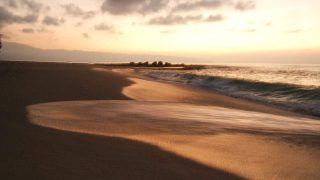
We were there in January and February of this year at Poipu a lot doing our seal work and the currents were very strong and changeable with the lifeguards closing the point very often because of the water flowing past it like a rushing river. Do you know the times of these incidents? Were lifeguards on duty? What we see early before the 9am lifeguard shift starts and after five when it is over, is very alarming. People take such risks in those off-hours. Our early and late shifts for the seals cover these hours sometimes and it always amazes me that more people do not die during these unmonitored times. We are there to keep people back from the seals but are not allowed to interfere with people in the water. All we can do is call 911. It seems that with all of the revenue the island takes in from visitors in taxes and fees that it would be wise to use some of that to extend lg hours at places like Poipu from dawn to dusk. Just sayin’.
I have to wonder if any of the snorkelers who died were wearing full face masks. Only inexperienced tourists seem to wear them. They are not safe and IMHO should be banned.
Beth…..I live here. I am not an inexperienced tourist. I wear/use a full face mask. Many, many people here also use them. From my little amount of watching people use them, the problem exists in people not taking the time to acclimate themselves and learn how to properly use them. Banning them would serve no purpose as just as many people using traditional snorkels died here. If someone wants to use a full face and does not take the time to use it properly, that is their call. We cannot ban everything because people do not take the time to learn.
By your train of thought, we should ban just about everything. Given the number of traffic fatalities in the islands this year, which totally outstrips snorkeling fatalities, we should ban automobiles. This is not a feasible concept to implement nor should we do it. People need to make their own decisions and before doing so, educate themselves.
You cannot stop people from making bad choices. Live and how you wish to live it is a choice thing. Not obtaining knowledge is a choice. Why punish everyone for those that wish to remain ignorant in things that can cause death.
Oh my goodness Beat of Hawai’i!
What an incredible reminder of water safety and a beautiful tribute to those lost to the sea.
Every time anyone goes out into the water the dice are rolled. Mother nature can be unpredictable for sure.
Age, experience, plus the unpredictability of the ocean itself, all factor in. Add in undiagnosed underlying medical conditions, and it increases possibilities of having an issue.
Mahalo Nui Loa for the reminder to everyone to be especially careful. Never go in the water alone and always know what the conditions of the ocean are at that time.
Stay safe out there people!!
Aloha and blessings always.
Hi Pam.
Thanks! Between the number of ocean incidents we’ve witnessed over the decades and the issues we’ve had ourselves, this subject is near and dear.
Aloha.
Could have been a heart attack rather than a drowning but tragic never the less.
People wish to go outside the published known safe zone what can one do. It becomes a personal choice and a very dangerous one.
I do think it would be helpful to know their prior health condition, if wearing one of those full face masks, when they arrived, if they were swimmers etc. It’s very sad and people need to realize that this is an ocean, not a lake, bathtub or pool …hope this article will help some tourists to think before venturing out into the ocean …very sad, indeed
Sometimes our visitors had been sitting at a desk all year. They vacation here and are more active than they ever had before. Their ages are sometimes in the heart attack range. It’s so sad that this happens.